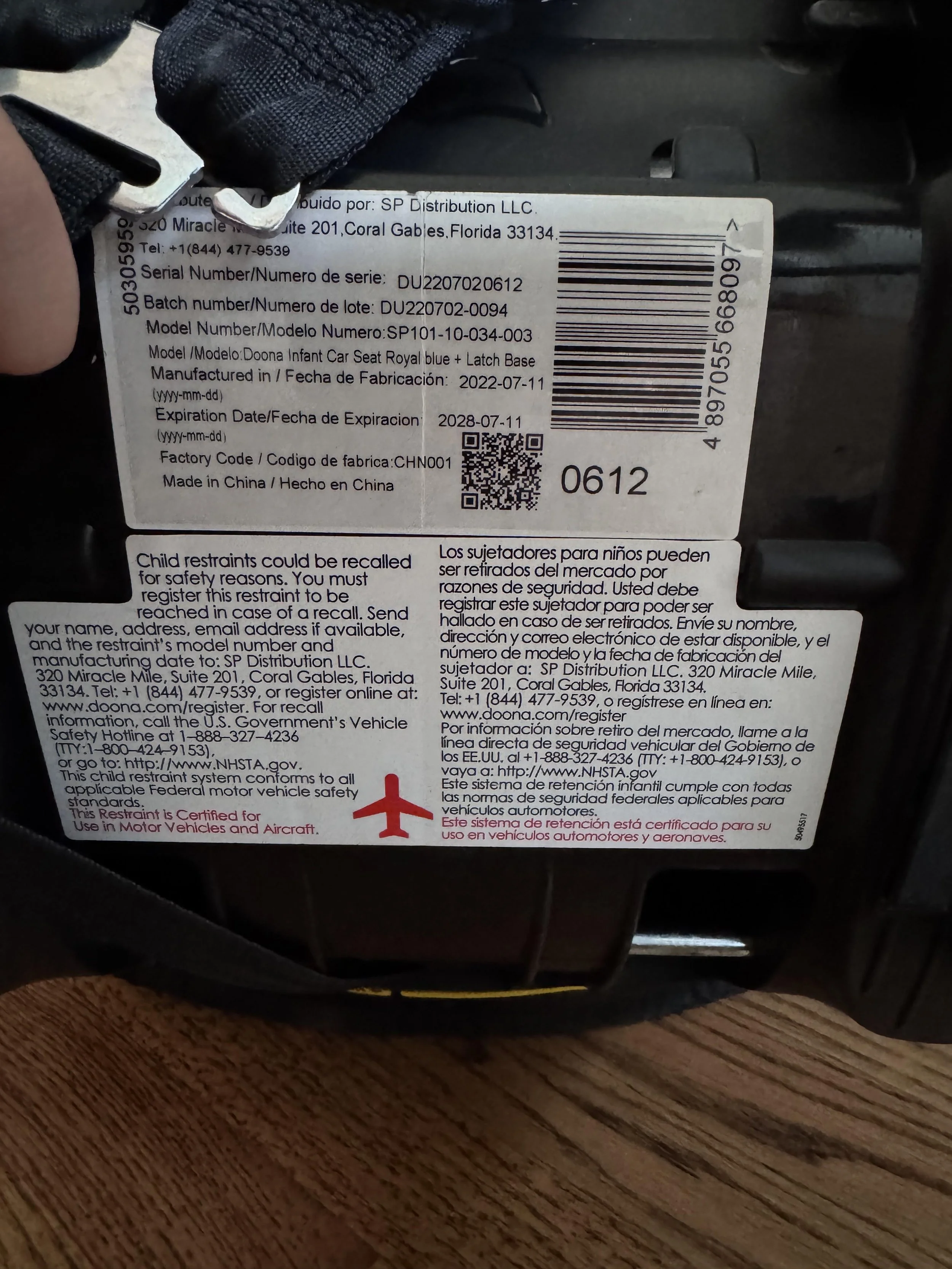What Car Seats Are FAA-Approved? See The List!
Getting ready to fly with your family and feeling unsure about whether your car seat will make it past the gate?
Flying with kids can sometimes feel like a full-contact sport. Between snacks, carry-ons, and strollers, the last thing you want is to get to the gate and find out your car seat can’t go on the plane.
A lot of parents don’t realize that not every car seat is approved for air travel. While the list of non-approved seats are relatively short, I want you to do a quick check of your seat before you head to the airport.
Plus, I’ll share some practical tips for flying with your car seat so you can focus on making travel memories instead of worrying about safety checks.
To read more about car seats and airplane travel, check out my post: Do You Need A Car Seat On The Airplane? Ask A CPST where I cover ALL things car seats and airplane travel!
What Does “FAA-Approved” Mean?
When a car seat is FAA-approved, it means the Federal Aviation Administration has certified that the seat meets safety standards for use on an aircraft.
Most car seats are FAA-approved!
Approved seats are tested for crash safety in a way that mimics in-flight conditions, including forces that might happen during an abrupt stop or change in altitude.
How to Check If Your Car Seat Is FAA-Approved
To see if your car seat is FAA-approved, check the label on the side of your infant seat. Usually, the label says: “This restraint is certified for use in motor vehicles and aircraft.”
Types of FAA-Approved Car Seats
Again, most car seats ARE FAA-Approved! However, if you’re in the market for a new seat, here are some of my favorites.
Infant Car Seats
Nuna PIPA RX: Known for their lightweight design and ease of use.
Joie Mint Latch: a baseless seat with a rigid latch ideal for traveling and ride shares
Evenflo Shyft DualRide: Great for families who travel frequently.
Convertible Car Seats
Graco SlimFit 3 LX: Extended rear-facing capacity, perfect for long flights.
Graco Contender Slim: This seat has a closed belt path, meaning the airplane belt buckle won’t push through the fabric and bother your child.
Cosco Scenera Extend: This updated version of the Cosco Scenera Next is the most lightweight, convertible seat.
Convertible seats can be rear- or forward-facing, so they’ll last through multiple stages of your child’s growth. They’re great if you don’t want to buy a separate travel seat.
Forward-facing harness
WAYB Pico: This unique seat fits children for a short period of time, but can be carried like a backpack. If you travel frequently, this seat is a must-have.
The Pico is the only seat of its kind that is solely forward-facing with no other mode of use.
What Is NOT FAA-Approved?
Many parents assume that all car seats can be used on planes, but that’s not the case.
Booster seats without internal harnesses are never FAA-approved. Airplane belts are lap-only, so boosters can’t be safely used on a plane. Instead, bring a backless booster as a personal item to store in the overhead bin or check your booster.
The Ride Safer Travel Vest (RSTV) may be a good option for cars, but it’s not allowed for use on planes. Keep them tucked away until you land.
A CARES Harness is an FAA-approved option for use on planes only (not in cars). They’re good for kids who are too small for the airplane belt (around 40 lbs.) but will have a car seat at the destination.
While not something you would see on domestic flights, belly belts are not safe and are never recommended to secure your child. These belts can increase the child’s risk of injury, but are sometimes required on international flights because they prevent an infant on a lap from injuring other passengers in the event of an emergency.
Important note: flying with a child on your lap is allowed on most airlines, but it’s far less safe than using an approved car seat. If there’s turbulence or a rough landing, the risks are much higher without the added protection of a secured restraint.
Using a car seat on the flight is also the only way to make sure your car seat gets to your destination in good working order! Checked car seats risk being lost or damaged.
Tips For Flying With Car Seats
Always book a separate seat for your child to make sure you can safely install the car seat.
Practice installing the seat at home with the seat belt before your trip to familiarize yourself with the process.
Consider using a car seat, travel cart, or backpack for easier transport through the airport.
If your car seat doesn’t fit, ask the flight attendant to reseat you in a bulkhead row or an aisle with movable armrests.
If you choose to check your car seat, once you get to your destination, inspect the child restraint to make sure no visual damage has occurred and all aspects of it function properly.
FAA-Approved Car Seats FAQs
Q: Can I use my car seat in booster mode on a plane?
A: Nope. Only the harness mode is approved for air travel.
Q: What if my car seat doesn’t fit in the airplane seat?
A: Try lifting the armrest or requesting a different seat. Bulkhead rows often have more space. If you purchased a ticket for your child, the airline has the responsibility to accommodate the car seat in another seat in the same class.
Q: Do I need to buy a seat for my child, or can they fly as a lap infant?
A: Lap infants are allowed on most flights, but buying a separate seat and using an FAA-approved car seat is much safer.
It just takes a little extra planning!
Flying with littles can be challenging, but choosing an FAA-approved car seat ensures your child’s safety and takes a big chunk of stress off your plate. Double-check for that approval sticker, plan ahead, and you’ll board knowing your child is protected.
Have you used an FAA-approved car seat on a flight? Share your experience in the comments! And for more family travel advice, by car or by plane, check out my latest posts:





